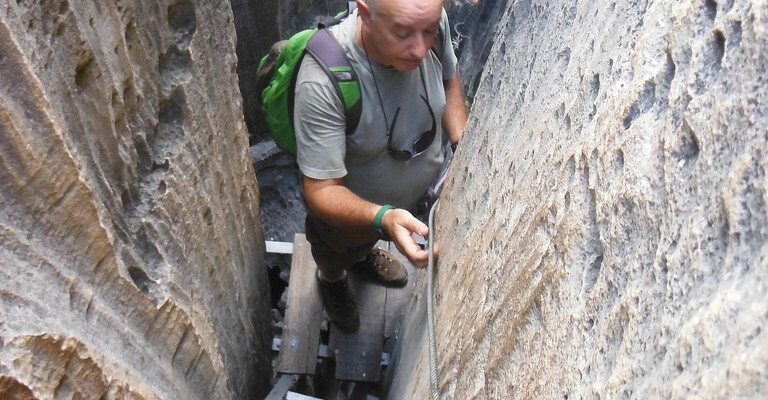Tsingy de Bemaraha Reserve
Tsingy du Bemaraha is a huge reserve in Madagascar, which consists of limestone cliffs that go 40 meters into the sky. The reserve is located on the west coast of the island. It was created to protect karst landscapes and different species of lemurs. The Tsingy de Bemaraha Reserve covers an area of 1500 km². For the most part it consists of impassable labyrinths. These are ridges of limestone prongs that locals call “tsingi”, which means “tiptoe.”
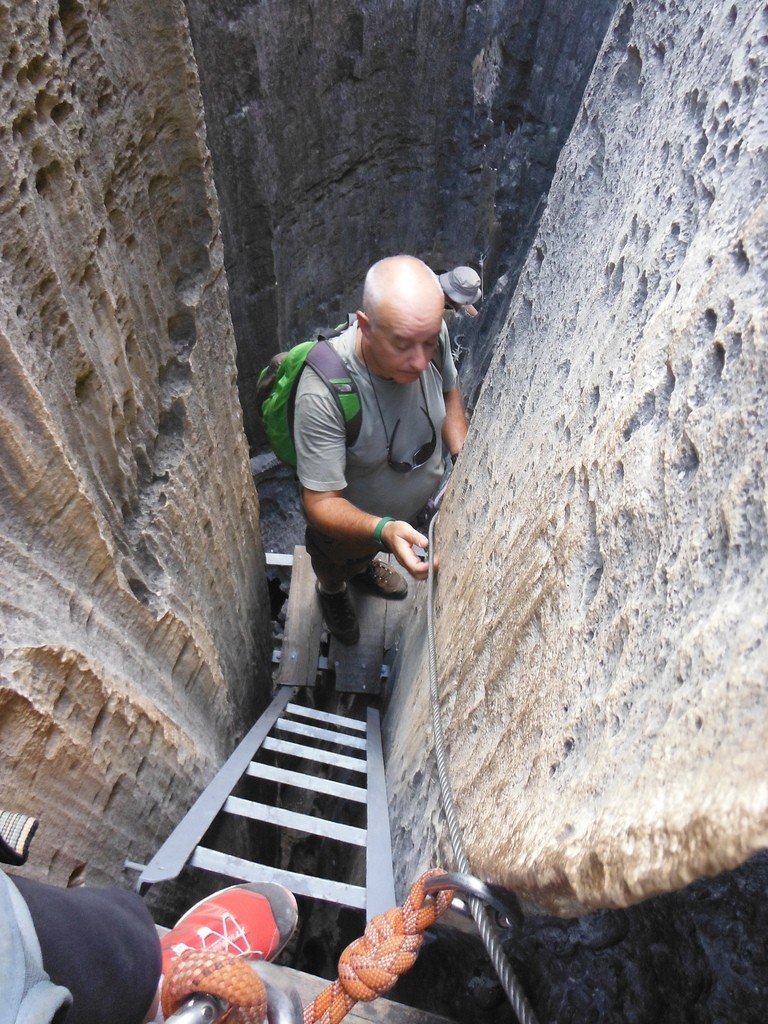
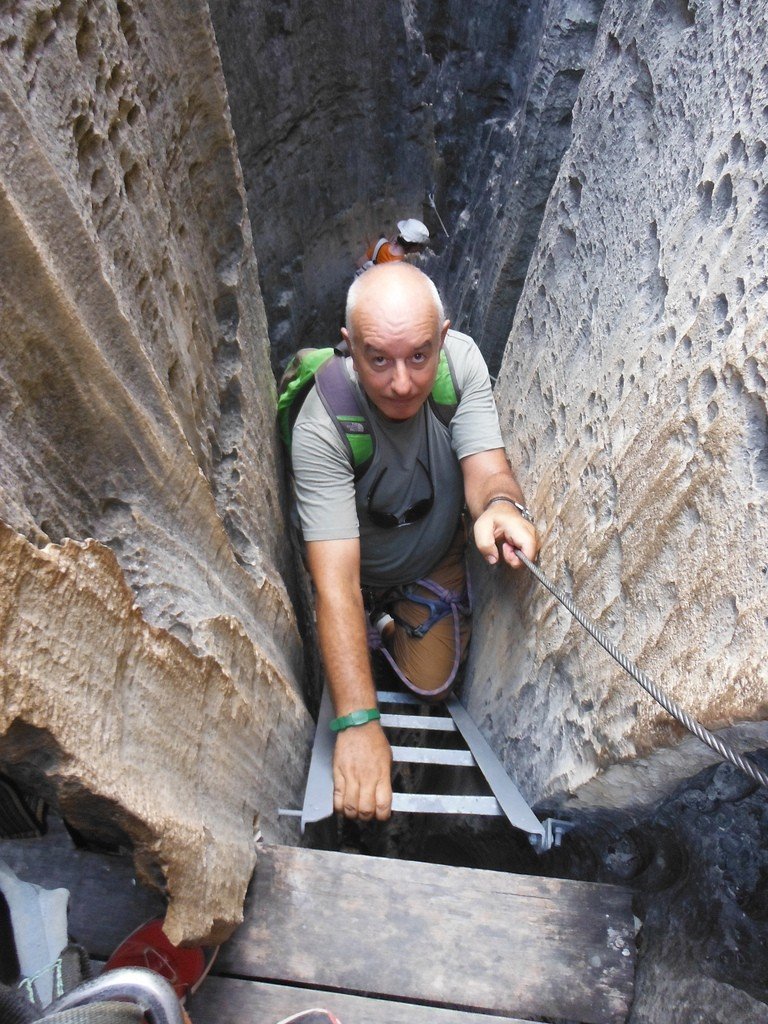
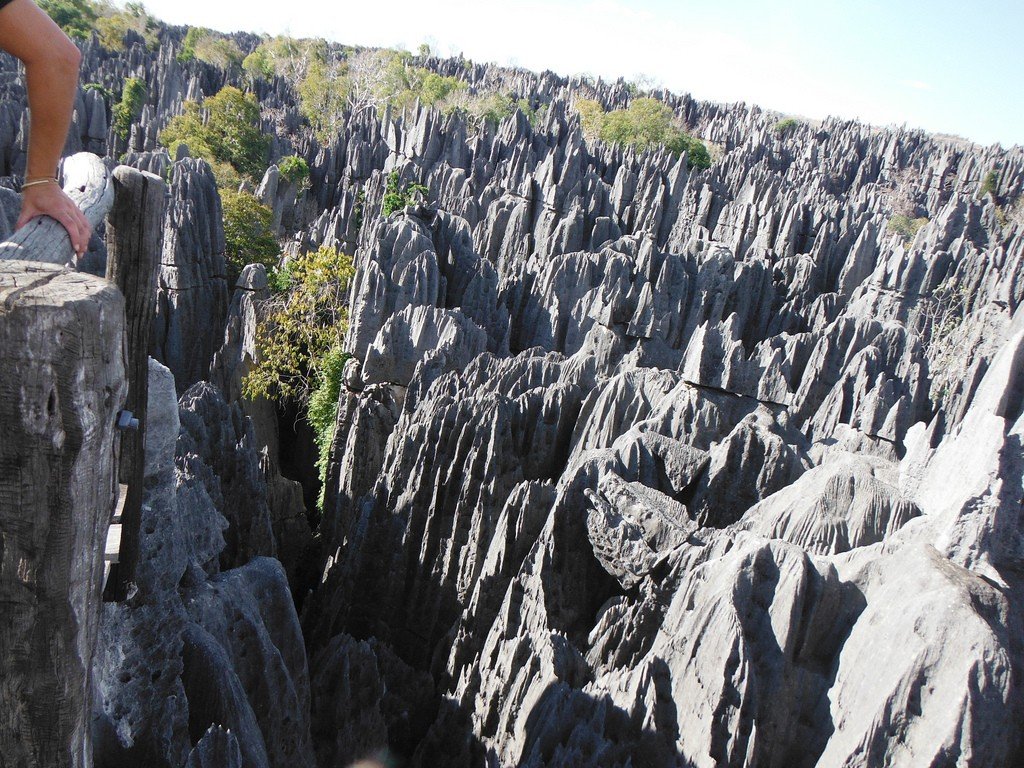
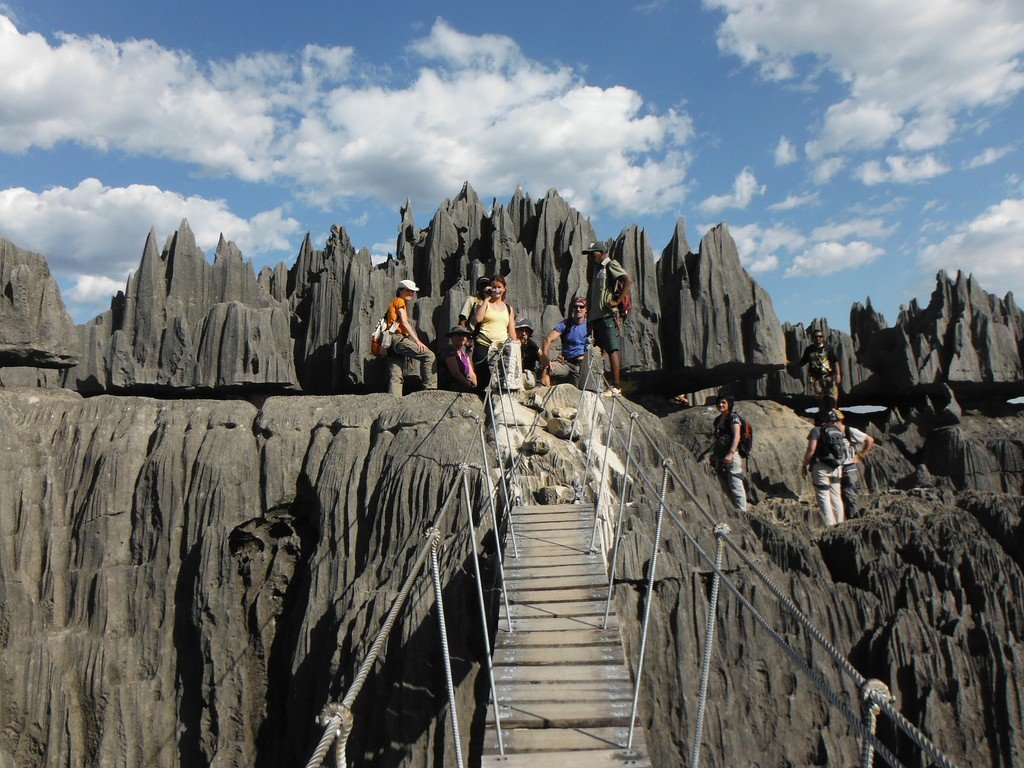
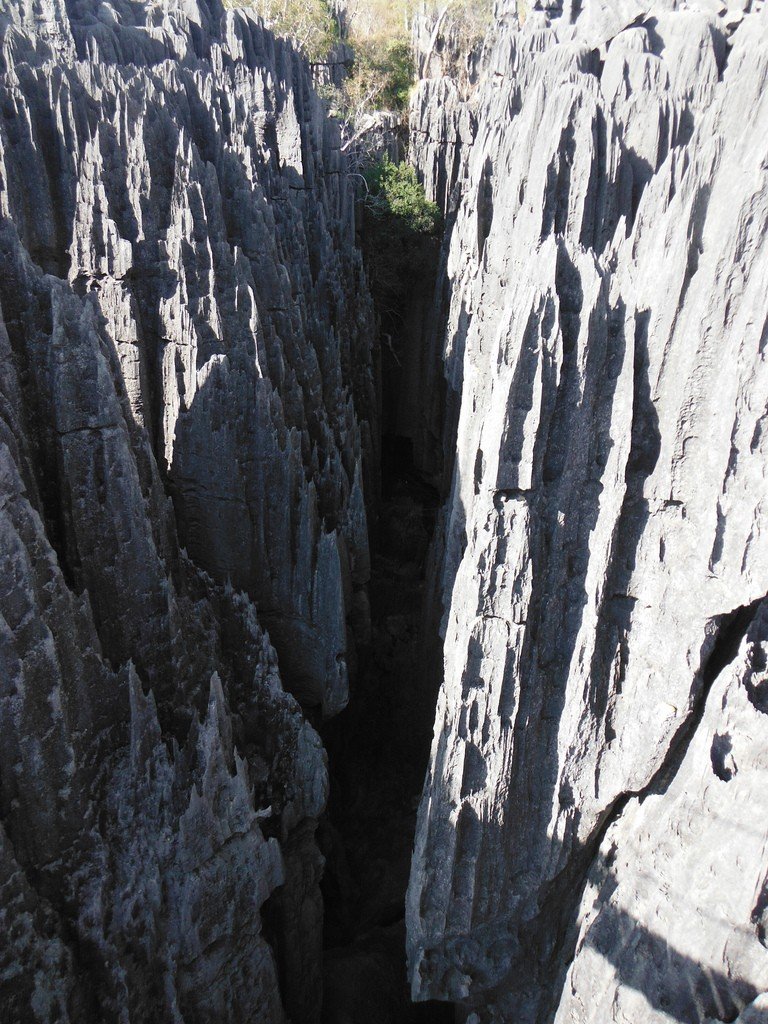
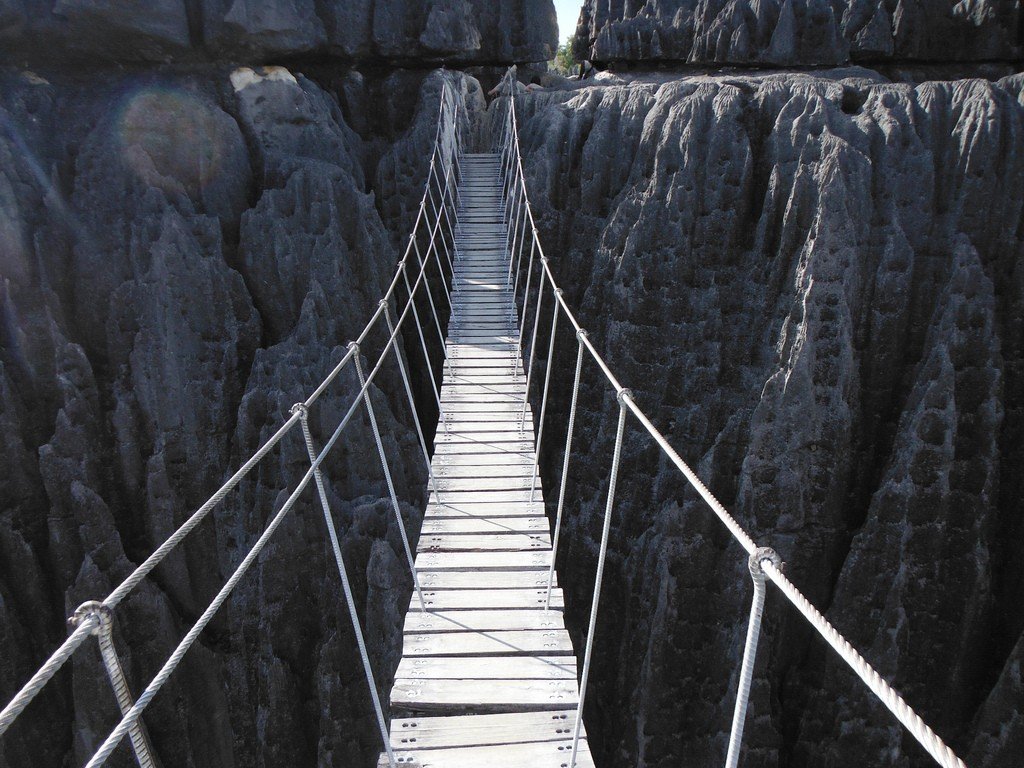
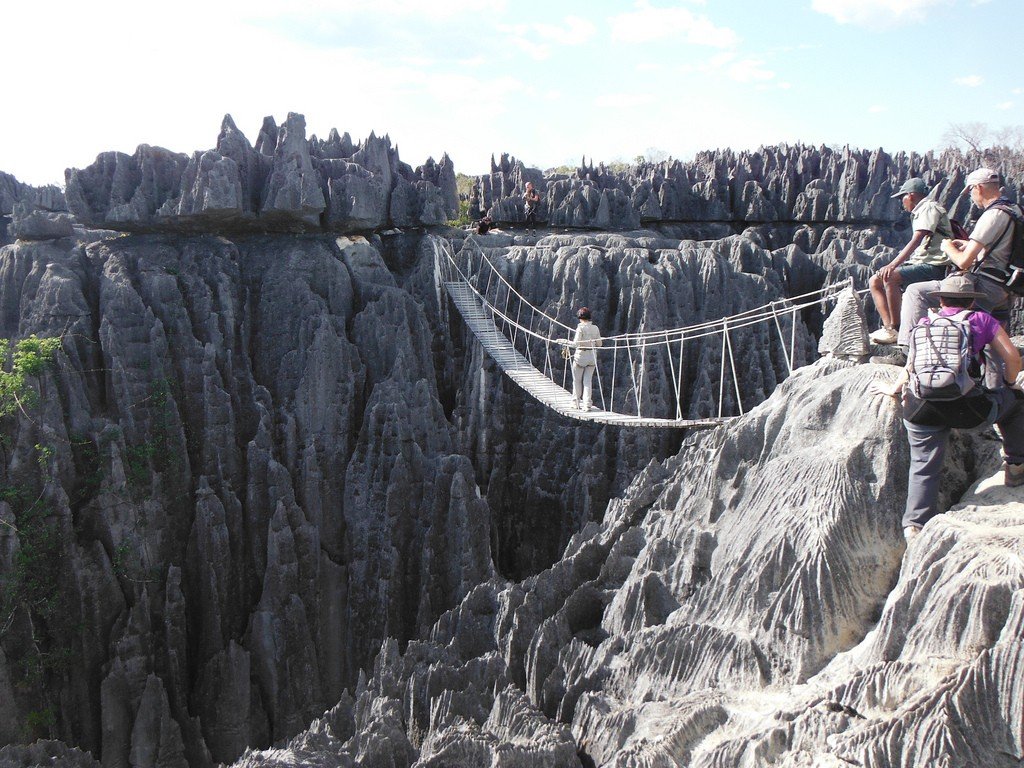
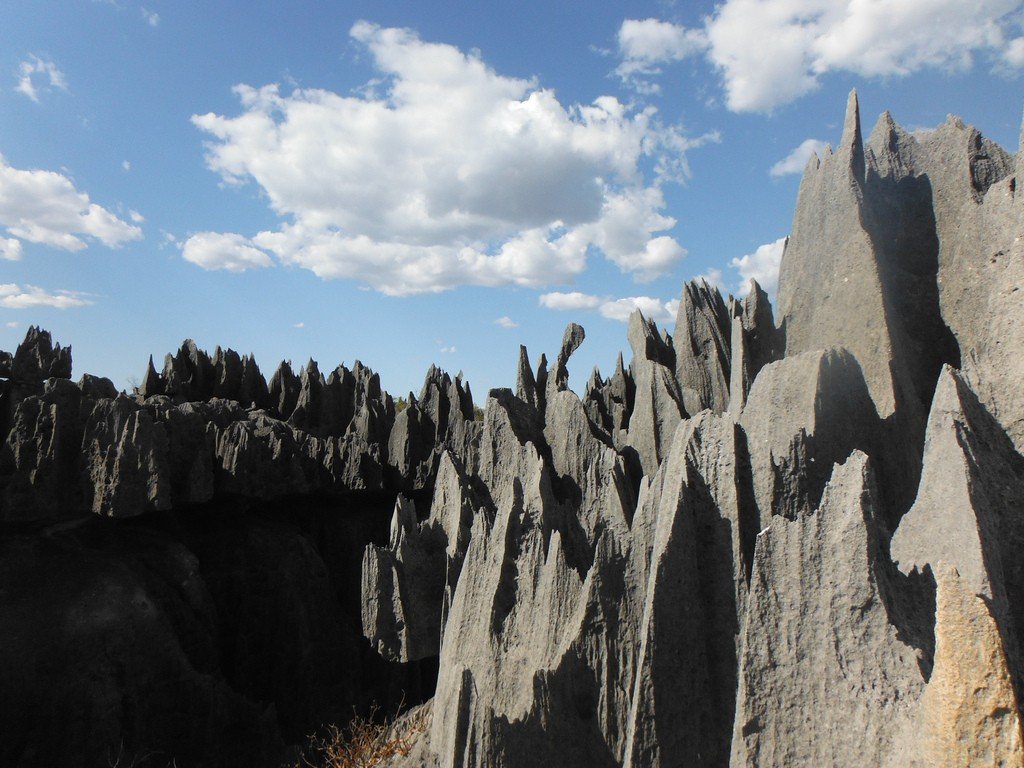
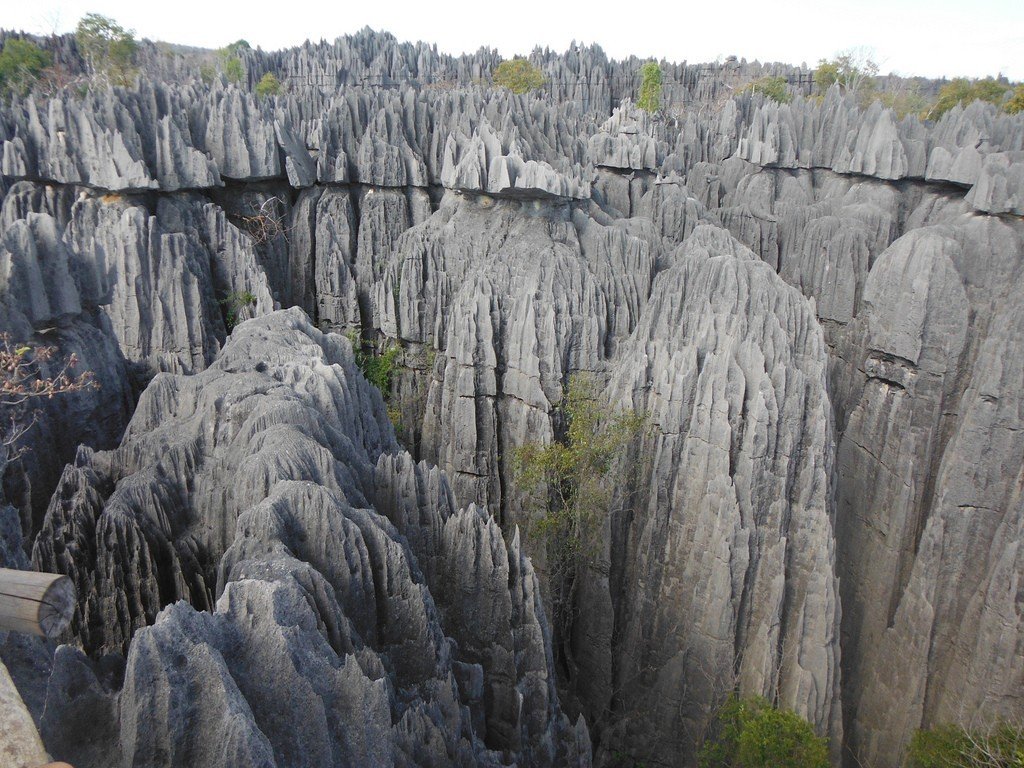
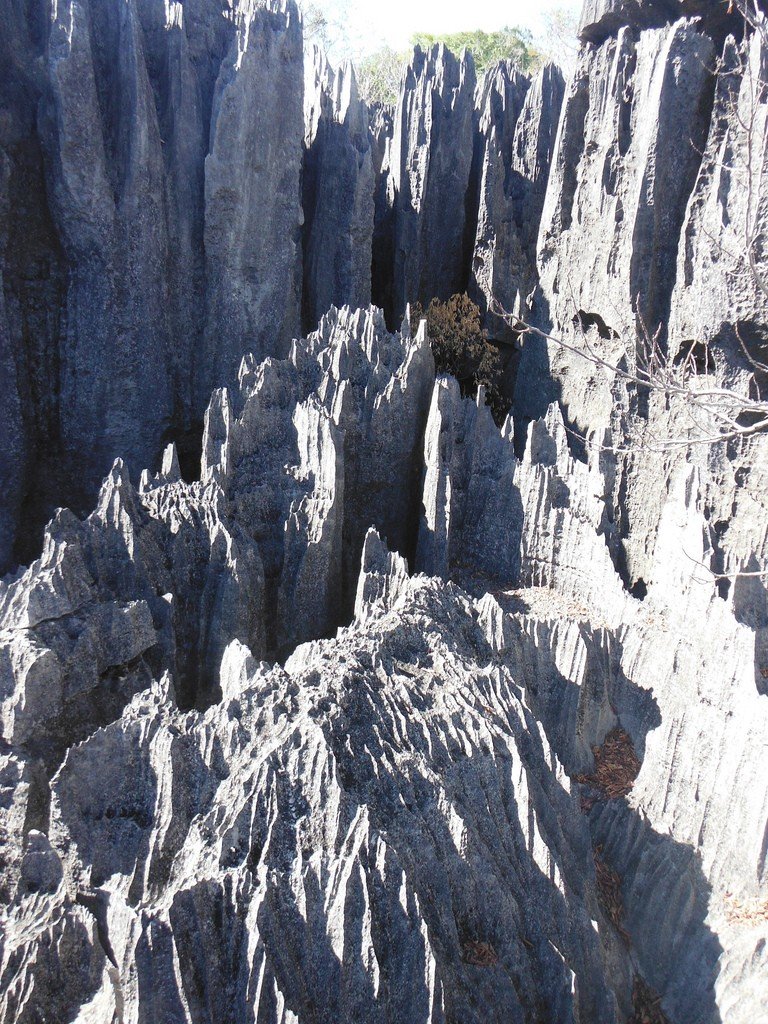
Video: Tsingy du Bemaraha
General Information
Local people say that in this entire area you can barely find a piece of flat land big enough to put your foot on, a factor that helps save at least some of Madagascar’s plants and animals from being wiped out.
.Below, at the foot of the Stone Forest, there are forest canyons, narrow gorges, mysterious caves, and the Monambolo River carries its dark waters throughout the protected area.
.The peaks are located so close to each other that the area becomes virtually impassable for humans, but not for lemurs, which are there in great numbers. These cute, nimble creatures look quite strange against the rocky and harsh terrain surrounding them. In addition to them, the reserve is home to a host of other wild animals and plants, some of which are endangered and protected.
.The views from the summits of the Tsingy du Bemaraha Reserve are fantastic: the whole area seems to be covered with dark and sharp, like huge needles of a sea urchin, tops of stone jungle. At the bottom of the gorge between the rocks grow palm groves, where live sifaks – bear-like lemurs with white and very soft fur.
.
The main attraction in the reserve is climbing the cliffs, which looks like a mountaineering practice. The guides give out safety belts with carabiners. Grabbing the sharp teeth with your hands, you need to climb up the limestone to the observation deck.
.
Tsingy du Bemaraha is divided into two parts – Grands Tsingy (big rocks) and Petits Tsingy (small rocks). It is better to choose the big ones, they are more interesting, but the way to them from the entrance to the reserve will take about 3 hours, although it is only 17 km. When going on the excursion, take care of good boots with sturdy soles that do not slip and have a good grip on the surface. For those who are afraid of heights and do not want to turn into a mountaineer, guides organize excursions through the leafy forests hidden in the lowlands, where you can observe lemurs and chameleons, the tiniest of which – brukesia – fits on the tip of a finger.
.The eastern boundary of the protected areas runs along the Bemaraha cliff, which rises 400 meters above the Monambolo River valley. The northern part of these lands, which is closest to population centers and more accessible to the public, is a combination of undulating hills and yellow limestone spires and crenellations.
Tourists
A tour to Tsingy du Bemaraha can be bought in the town of Morondave, which is 200 kilometers from the reserve. A long and bumpy road – the last 80 kilometers are especially hard – can spoil the whole mood, but for the sake of the panorama from the top of the cliffs it is worth tolerating any jolt. For the convenience of tourists near the reserve are built several hotels, where you can stop to take a break after a fascinating walk in Tsingy du Bemaraha.
.
The hike should be accompanied by a guide, as the chances of getting lost are very high. Here the highest stone peaks, which are unrealistic to overcome without special equipment, can confuse you quite quickly.
.
Canoeing on the Monambolo River is quite popular among tourists.
.